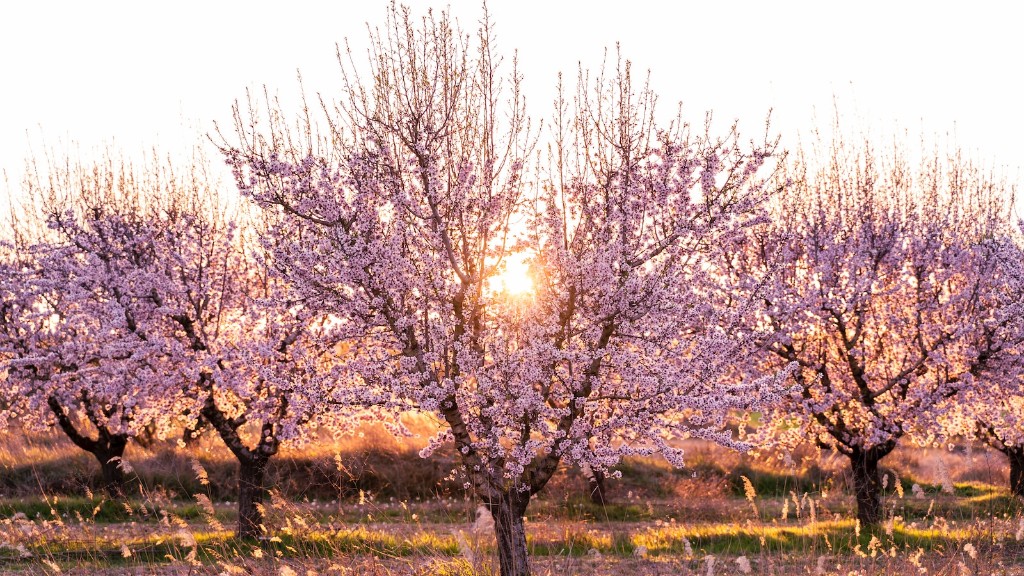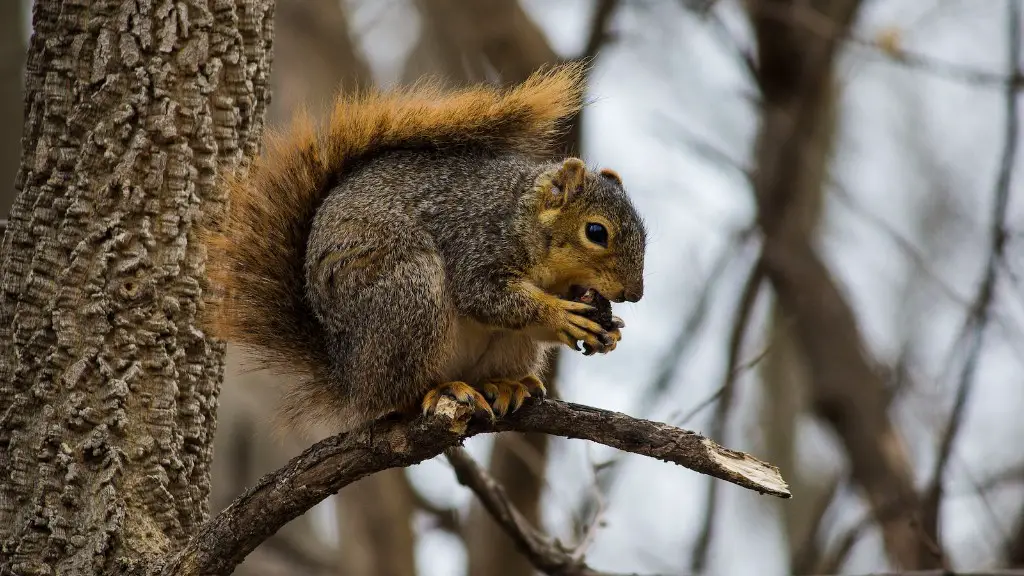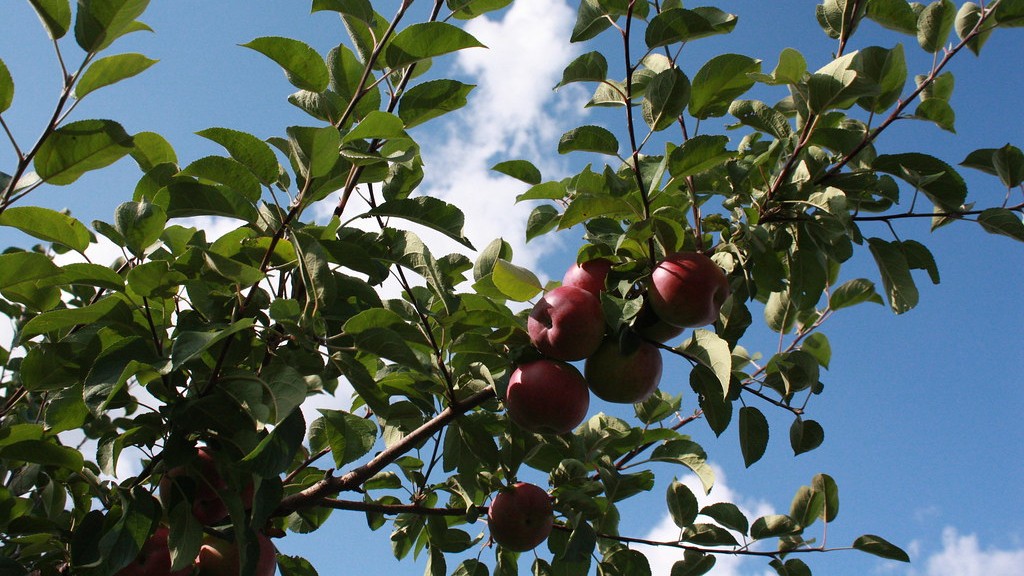Causes of Brown Cherry Tree Leafs
The sight of brown leaves on a cherry tree can be worrying for a garden enthusiast. Cherry trees are prone to various diseases and pest infestations that can cause their leaves to turn brown. Common causes of brown leaves include bacteriosis, fungal diseases, Coryneum blight, spot anthracnose and even air pollution.
Bacterial infections such as Bacteriosis can cause brown leaves on a cherry tree. The infection is typically caused by a bacteria called Pseudomonas syringae, which is found in the soil. When the bacteria is present, it will cause the leaves on the tree to turn yellow and eventually brown. The bacteria can also spread to other parts of the tree, eventually killing it.
Fungal diseases are another common culprit of brown cherry tree leaves. Examples of these include powdery mildew and blight. Both of these diseases can cause the leaves to turn brown, yellow, or even black. Treatment for these diseases includes pruning affected branches and spraying the tree with an appropriate fungicide.
Coryneum blight, also known as shothole blight, is a fungal disease that can cause brown leaves on a cherry tree. This disease is often caused by a fungi called Coryneum begoniae, which is found in soil. Symptoms of the disease include brown spots on the leaves and branches of the tree, as well as smaller, circular spots on the fruit. Treatment for the disease includes pruning affected branches and spraying the tree with an appropriate fungicide.
Spot anthracnose is another potential cause of brown leaves on a cherry tree. This disease is caused by a fungus called Glomerella cingulata, which is found in the soil. Symptoms of the disease include brown spots on the leaves and branches of the tree, as well as brown spots on the fruit. Treatment for the disease includes pruning affected branches and spraying the tree with an appropriate fungicide.
Air pollution is another possible cause of brown leaves on a cherry tree. When air pollutants such as sulfur dioxide or nitrogen dioxide build up in the atmosphere, they can cause the leaves of a cherry tree to turn brown. The pollutants can also cause other damage to the tree, including stunted or distorted growth and even death.
In some cases, brown leaves on a cherry tree can be completely natural and not caused by any disease or pest. This can happen when the tree is under stress from a lack of water, cold temperatures, or extreme temperatures. Over- or under-fertilizing the tree can also cause the leaves to turn brown.
Prevention
The best way to prevent brown leaves on a cherry tree is to ensure it is planted in an area that is not susceptible to air pollution. Additionally, regular pruning and fertilizing can ensure the tree gets the right amount of sunlight, nutrients, and water it needs to stay healthy.
Inspecting the tree regularly can help to spot any potential abnormalities early on. If any signs of disease are spotted, it’s important to take appropriate action as soon as possible to prevent the disease from spreading.
Using organic or inorganic fungicides and insecticides can help to prevent or treat any diseases or pests that could be affecting the tree.
It is also important to keep the tree well-watered, and to mulch the area around the tree to help retain moisture and reduce stress on the tree.
Treatment
If cherry tree leaves are already turning brown, the first step is to identify the cause and take appropriate action to address the issue. In cases of bacterial or fungal infection, pruning affected branches and spraying with an appropriate fungicide or insecticide can help to address the issue.
If the cause is air pollution, the solution is to transplant the tree to an area with lower air pollution levels and/or increase air circulation around the tree by pruning.
If the cause is a natural one such as overwatering or under-fertilizing, the solution is to adjust the tree’s watering and fertilizing schedule. Additionally, it may be necessary to replace some of the soil around the tree to restore its nutrient levels.
It is also important to keep the tree well-watered, and to mulch the area around the tree to help retain moisture and reduce stress on the tree.
Symptoms to Monitor
To determine whether the cause of brown leaves on a cherry tree is a natural one or disease-related, it is important to monitor the tree for certain symptoms. Symptom include yellowing leaves, brown spots on the leaves or fruit, and stunted or distorted growth. The presence of these symptoms can indicate a disease or pest infestation and should be addressed quickly to prevent further damage to the tree.
Home Remedies
There are several home remedies to help address the issue of brown leaves on a cherry tree. Pruning affected branches, transplanting the tree to an area that is not susceptible to air pollution, and increasing air circulation around the tree by pruning are all effective methods. Additionally, using organic or inorganic fungicides and insecticides can help to prevent or treat any diseases or pests.
It is also important to keep the tree well-watered, and to mulch the area around the tree to help retain moisture and reduce stress on the tree. Additionally, adjusting the tree’s watering and fertilizing schedule, and replacing some of the soil around the tree to restore its nutrient levels can help to keep the tree healthy.
Professional Intervention
It is important to contact an expert if the cause of Brown cherry tree leaves can not be identified or treated with home remedies. An expert can help to diagnose the issue and recommend an appropriate solution. An expert can also provide guidance on how to properly care for the tree and provide advice on how to prevent future issues. Additionally, they can provide guidance on the types of fungicide or insecticide to use, as well as advice on proper pruning techniques.
Conclusion
Brown leaves on a cherry tree can be caused by a variety of factors, including disease, pest infestation, air pollution, and natural causes. To determine the cause, it is important to monitor the tree for certain symptoms and take appropriate action as soon as possible. Home remedies such as pruning, transplanting, and using fungicides and insecticides can be effective in addressing the issue. It is also important to keep the tree well-watered and fertilized. If the cause of the brown leaves can not be identified or treated with home remedies, it is important to contact an expert for advice.





